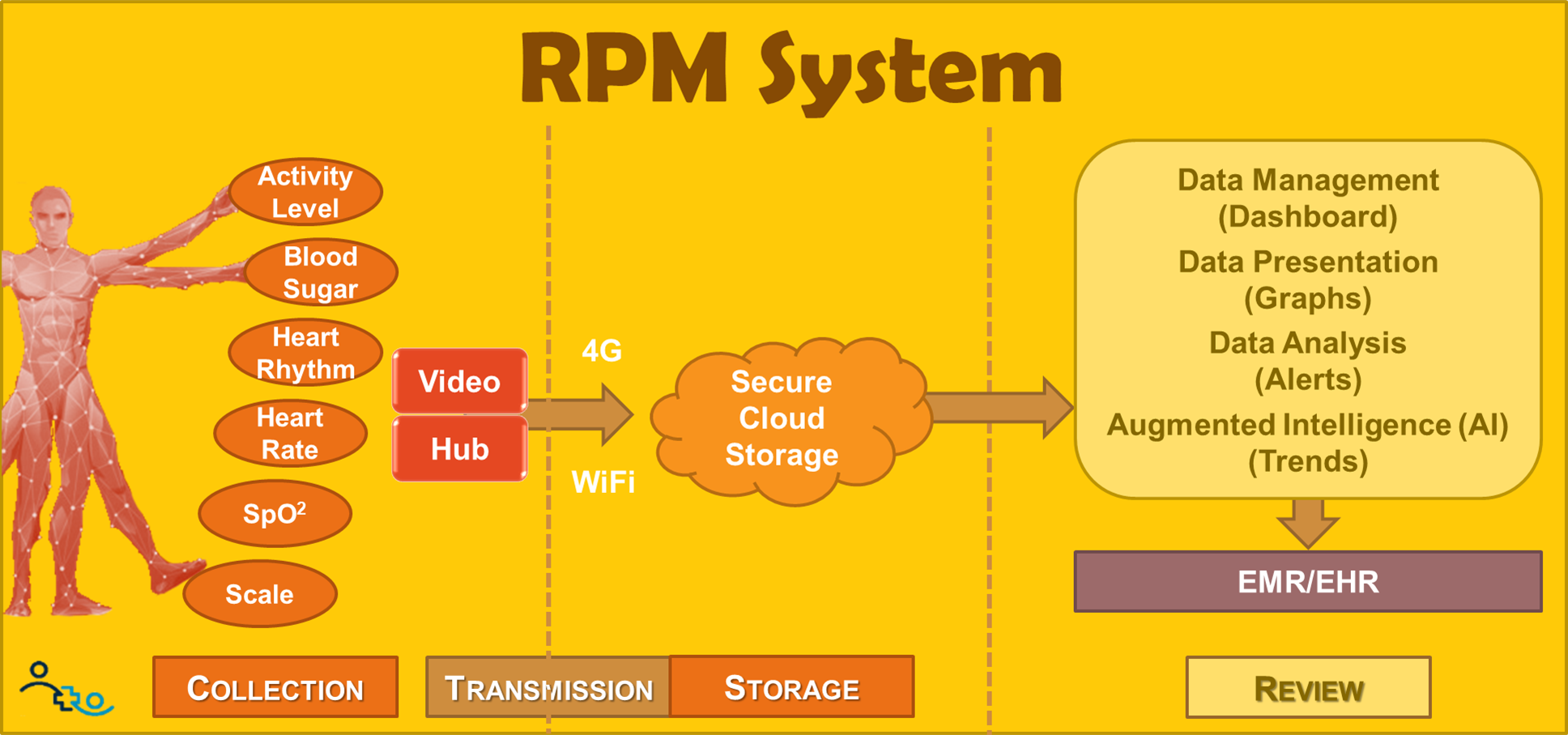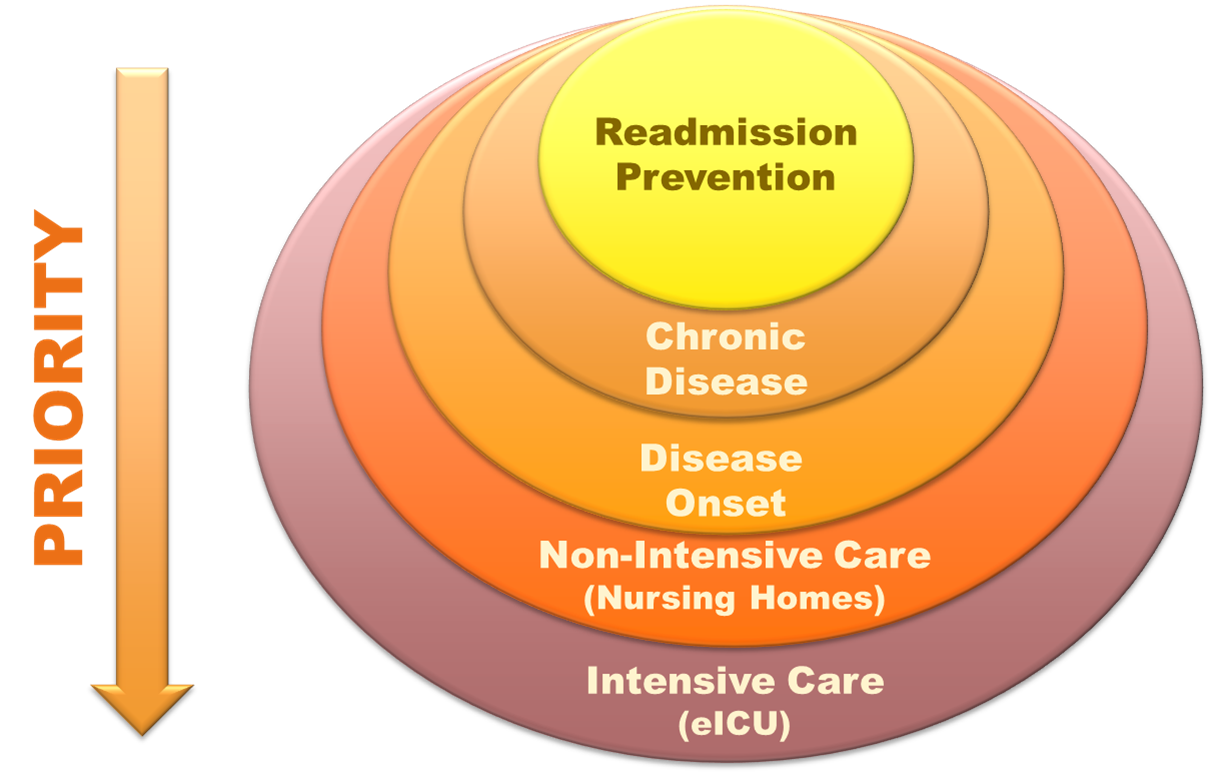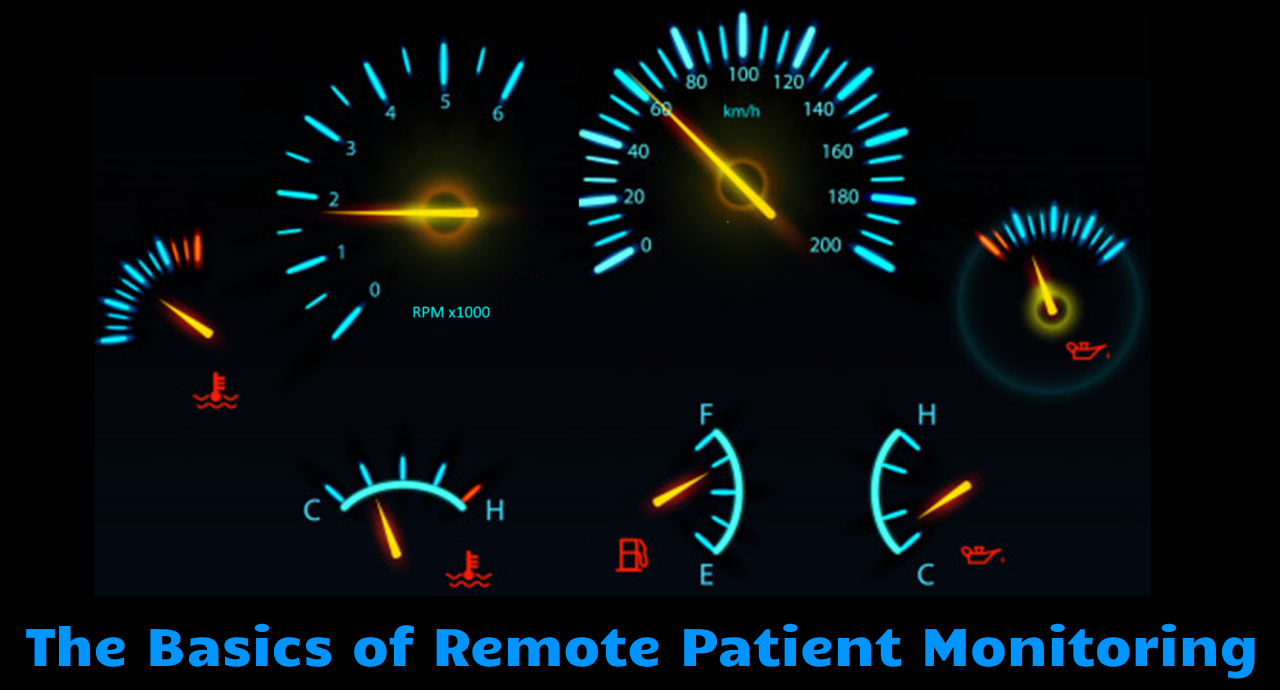For months now we have been covering the telemedicine subset of “Interactive Patient Care’, which is typically delivered via a live audio/video connection, though during the Covid-19 health crisis (too) many are still using “telephonic care” as a way to “practice medicine at a distance”. Repeatedly though, people are increasingly interested in another subset: Remote Patient Monitoring (RPM).
The interest in Remote Patient Monitoring is manifold. BC (“before Covid”) increasingly RPM kits were prescribed for chronic care management and for readmission prevention (see below). Now, during Covid, the motivation lies in the difficulty of doing long-term primary or specialty care only via video visits.
Medicine, aside from the experience and intuition of the physician, increasingly relies on data to accurately diagnose and to effectively treat disease. In the absence of even the most basic data – heart rate, temperature, blood pressure, weight, height – it is difficult to confidently arrive at a diagnosis or to assess the progress of treatment.
RPM defined
While the image above may conjure up the definition of “Revolutions per Minute (RPM)”, our focus is on the medical use of this initialism. There are two ways to unfold “RPM”: Remote Patient Monitoring and Remote Physiological Monitoring. While the latter term is more accurate (and less Orwellian than the former), the former term has been in use longer. We are obviously not interested in monitoring patients, but rather in data that can get us insights into the health of the patient.
Here is a good definition we’ve used in recent years:
“RPM: The continuous or periodic
remote collection, transmission and review of
physiological data to inform care decisions.”
What I like about this definition is especially the last part: the data must be presented in a way that facilitates the making of care decisions. That is the primary purpose of RPM.
RPM System Overview
A typical RPM system comprises three parts:
- the home-based data collection and transmission
- the cloud-based storage system
- the presentation and review system



The home-based collection system includes the variety of different data acquisition devices such as a scale, a blood pressure cuff, and pulse oximeter, a glucometer, embedded accelerometers, etc. In addition most modern systems include a central hub that wirelessly collects the various vital signs and transmits them via the cellular network or WiFi to a centralized secure storage system.
Some systems also include a display screen (e.g., a tablet) that can be used in many ways – to prompt patients to collect the data, to remind patients of other tasks (e.g., refill medication), to ask daily questionnaires (e.g., a PHQ-9) and, when equipped with a webcam, to converse with their providers and nurses via video.
Once transmitted to the storage, the data can be accessed and used to monitor a multitude of patients at the same time. A proprietary data presentation is optimized for the unique nature of the longitudinal data (something most EMRs are not capable of handling). In addition to dashboards to quickly identify the patients needing attention, these review systems also include rudimentary data analysis (alerts) and increasingly sophisticated predictive analytics, or AI.
Most RPM solutions also integrate with the standard EMRs for long-term storage of the data in the patient’s medical record.
Uses of RPM
The uses of RPM are dependent on the where the system is used: in a clinical or in a non-clinical setting. The most common use of RPM-concepts in the clinic setting is the setup of an eICU. This provides the opportunity for rural hospitals to have 24×7 access to experienced critical care staff.
The more common scenarios (and the scope of our basic introduction to RPM) is the use of RPM in the home (or a home-like setting). Here the primary use cases include:
- short-term readmission prevention
- long-term chronic disease management
- long-term disease onset monitoring for at risk populations
Short-term readmission currently offers one of the highest ROIs or any telemedicine service – as high as 1:14.5, i.e., every $70,000 invested yields over $1M in savings, bonuses, avoided losses, etc. The primary value here lies in avoiding readmissions that are not reimbursed (e.g., within 30 days of discharge) and also to avoid penalties (primary from CMS).
The most common diagnoses qualifying patients for participation in a Readmission Prevention program include COPD, CHF, and MIs.
Long-term chronic disease management has become a big focal point over the last years, not the least due to the payment for every 20 minutes of chronic care management. This may or may not involve the use of RPM equipment, depending on the condition of the patient.
From a health system’s perspective that is trying to decide where to get started with RPM, I offer the following prioritization as depicted in the chart:



Readmission Prevention offers the highest, quickest ROI whereas eICUs are expensive to implement but also yield a tremendous ROI for the rural hospital aiming to keep patients in their community.
RPM Benefits
Aside from the obvious benefits of improved health outcomes and avoided utilization there are a number of not so obvious clinical benefits and opportunities for patient engagement.
-
“Seeing your body” increases patients’ engagementThe more patients understand the cause and effect of diet and exercise on their “values”, the more they are willing to be engaged in the care of their health.
-
Daily Insights allowing adjustment of the Care PlanOftentimes weeks can pass before the care team learns about the condition of a patient. Having daily “interactions” allows for rapid changes and improvements to the care plan, such as adjusting medications, starting or stopping physical therapy, etc.
-
Opportunities for Just-in-Time EducationMy favorite anecdote is of a patient whose fluid retention increased the day after going to the Chinese Buffet. Through the data, the monitoring nurse could illustrate to the patient the effect of the high salt intake in the restaurant.
-
Better “exam” capabilities – not “flying in the dark”This benefits is the one we will see more exploration of and more innovative technologies for. With the high convenience of virtual visits now experienced by millions of patients, clinics must deploy RPM tools that can aid in the proper full-spectrum exam, at least to the extent that it is regularly performed for a traditional in-person visit.
-
Establishing a Baseline to detect onset of diseaseWe know that, especially in health, an ounce of prevention is worth a pound of cure. Early “deviations from the norm” (especially when genetically expected) can be counteracted early on, never leading to the secondary and tertiary consequences.
-
With Video, opportunities for interactive visitsAs mentioned above, an RPM with a screen (e.g., a tablet) is a great tool for patients to stay in touch with their care team. This could be the monitoring nurse, a social worker, an endocrinologist, a counsellor or the primary care clinician.
RPM is here to stay.
While with the increased use of electric cars the RPM meter on a car dashboard will disappear, RPM for “driving patients’ health” is here to stay and will grow exponentially in the next years to come.
Many payors (CMS, some Medicaid programs) are recognizing the value or RPM to avoid expensive utilization by being able to intervene earlier and are paying reimbursements that is pretty much on par with the expenses and overall value of RPM to an organization.
Telehealth Tuesday Trigger:
- How is your organization using RPM?
- Are you growing your use of RPM?
- What are your primary use cases?








To receive articles like these in your Inbox every week, you can subscribe to Christian’s Telehealth Tuesday Newsletter.
Christian Milaster and his team optimize Telehealth Services for health systems and physician practices. Christian is the Founder and President of Ingenium Digital Health Advisors where he and his expert consortium partner with healthcare leaders to enable the delivery of extraordinary care.
Contact Christian by phone or text at 657-464-3648, via email, or video chat.







[…] can stand for remote patient monitoring or remote physiological monitoring and is concerned with the long-term periodic or continuous […]